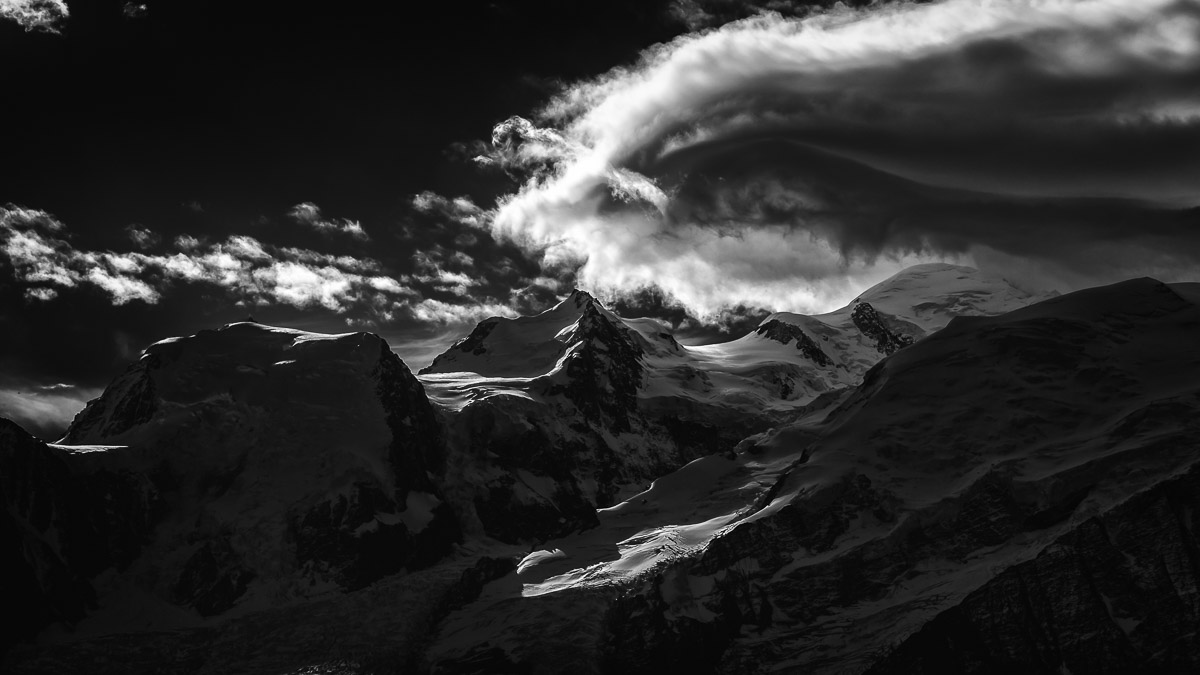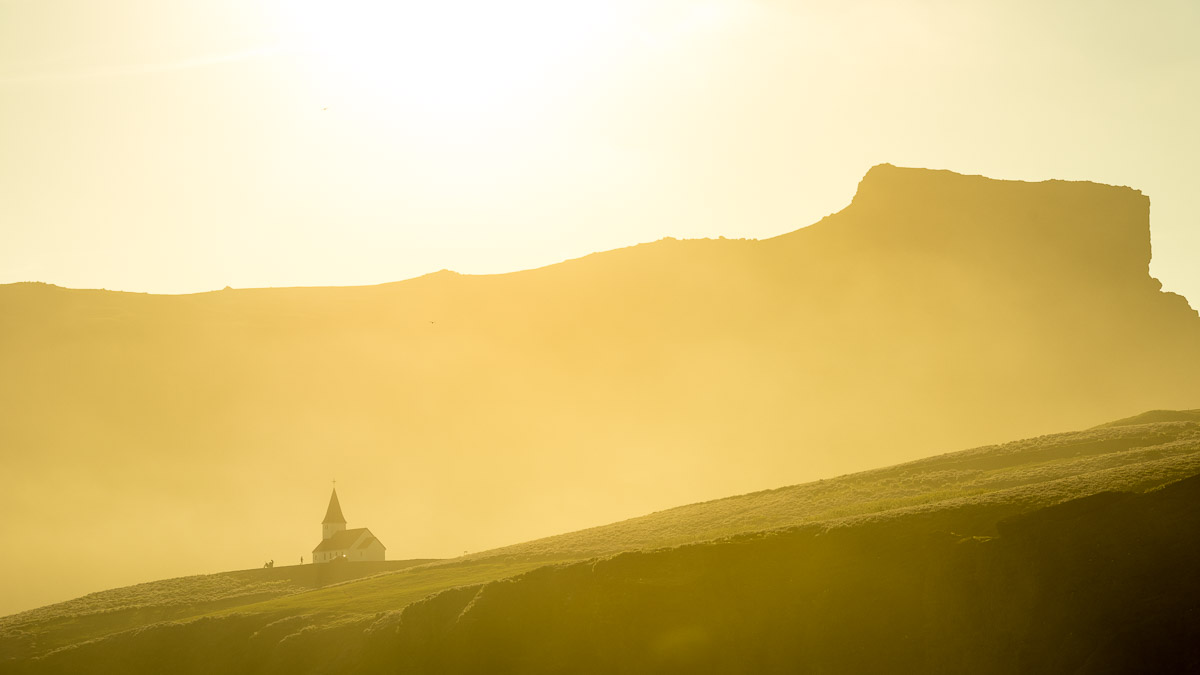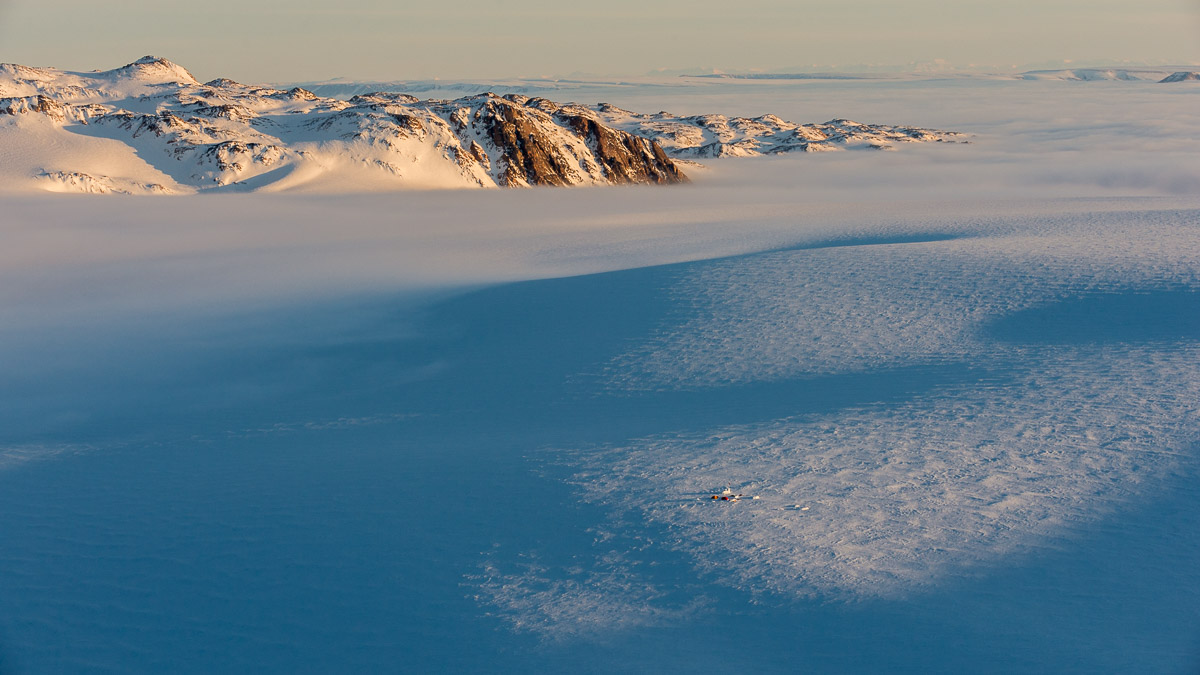James Dec 07, 2011
Intro to Photography Class
Better known as Reddit Photoclass
05 – Exposure, Pipes and Buckets
Welcome to the second part of this photography class. After getting an overview of what a camera is and how focal length works, let’s now go on to what is probably the most important and scariest parameter of any photograph: exposure.
In order to keep things (relatively) short, we will split this vast subject into many small digestible pieces. In this lesson, we will see what exactly exposure is, and how we can use three camera controls to modify it. In the next lesson, we will talk about a very important tool for reviewing exposure: the histogram. In the subsequent three lessons, we will talk about each of the three controls (shutter speed, aperture and ISO) in more detail. Finally, we will discuss the slightly arcane topic of metering modes.
A photograph, as the name suggests, is a record of light. Exposure, quite simply, is the amount of light to which the sensor is exposed. We are all familiar with photos taken indoor without a flash and which appear too dark: they are underexposed, not enough light was allowed on the sensor. Conversely (though perhaps more rarely), we have also seen images too bright, with pure white in large areas: they are overexposed.
There is not one correct exposure of a given scene – depending on what you are trying to say with your image, you might actually over or underexpose on purpose. For instance, a backlit scene could be underexposed to create silhouettes against the sky. Or a portrait might be carefully overexposed to create a high-key feeling. However, what we will generally consider a good exposure is one with an even (but not necessarily linear, as we will see tomorrow) distribution of tones, from pure black to pure white, with no details lost to either shadows or highlights.
With the exception of some very manual film cameras, all modern camera bodies include one or several light meters, whose role is to measure the quantity of light and give a guess of what the correct exposure should be. What you will do with this information will depend on the shooting mode you are using: in auto, the camera will simply set all the required parameters so that you can shoot without questions asked. Alternatively, it can let you set one or more parameters and fill in the remaining ones (aperture or speed priority modes), or it can let you do the whole thing yourself, mentioning how your settings compare to what it thinks you should do, but not acting on it (manual mode).
Three, and only three, parameters control the quantity of light to reach the sensor. They are the usual suspects: aperture, shutter speed and ISO. Let’s see briefly how they work with an analogy.
Imagine that your sensor is a bucket. Light is water coming from a pipe (your lens) into the bucket. What you want to achieve is a good exposure – just the right quantity of water, to the rim but without spilling any on the floor. You can achieve that by doing three things:
- You can change the diameter of the pipe. The wider it is, the more water will come into the bucket (ignoring pressure issues – that’s when the analogy starts to break down).
- You can modify the amount during which the pipe is open. Obviously, the longer you leave it open, the more water will come through.
- Finally, the water is not very pure. There is a filter above the bucket to remove impurities. You can decide how fine the filter is: the coarser it is, the more water will go through, but at the price of more impurities making their way into the bucket.
You can decide to modify any of these parameters as you wish to achieve your perfect bucket, with some limitations of course: for instance, you can’t have a pipe of infinite diameter, there is a maximum size. Likewise, your filter can’t be too coarse or you might get dead rats in the bucket and it would be unusable.
Something that is extremely important to realize is that all three parameters are bound together. If you modify one and want to keep the same exposure, you need to modify another in the opposite direction. For instance, if you want to use a pipe with twice as much area (doubling the flow), you need to either cut the flow duration by half or use a twice as fine filter. Modifying a single parameter will result in a modification of the bucket content.
As you probably guessed already, the diameter of the pipe corresponds to the aperture, the duration to the shutter speed and the filter to the ISO. Things get even more interesting because each of these parameters has another consequence beside modifying exposure: aperture changes depth of field, shutter speed can introduce motion blur and ISO modifies the noise levels.
Let’s be a little more concrete. When you put your camera in a non-automatic mode (if it has one, if not, you can look at the metadata of old photos to find this information), you should see three numbers in the display, for instance f/8, 1/50, ISO 400 (the ISO is often hidden, you may have to hunt it down in the menus). What this is telling you is that the aperture is f/8, the speed 1/50th of a second and the ISO is 400. What you want these numbers to be will be covered in the next lessons. For now, let’s take a look at how modifying them changes exposure.
Put your camera in A mode. What this does is let you control the aperture and set the shutter speed accordingly. Turn the control wheel in one direction to modify the aperture. You should now see instead f/5.6 (if you turned in the correct direction). What this is telling you is that you are now using a wider pipe diametre and have doubled the flow. What you should notice is that the speed changed as well: now it is showing 1/100, and the ISO hasn’t changed. To compensate for the modification of one parameter, the camera changed another one, and kept the same overall exposure.
If you do want to modify the overall exposure while in a mode other than manual, you should use the aptly named button called “exposure compensation”. What this will do will depend on the mode you are using, for instance if you are in Aperture Priority, it will change the shutter speed to fill the bucket to a different level, while leaving you in control of the aperture.
In manual mode, the camera lets you modify all three parameters yourself without attempting to compensate and keep the same global exposure. It will usually let you know how far away you are from what it considers the correct exposure, but whether you want to follow its recommendation is up to you. In this mode, since we have full control anyway, the exposure compensation button is useless.
This should hopefully give you a good idea of what is going on in a camera brain, and what the A, S and M modes are for, but we have left a lot of things out, to be covered in the next lessons. For now, make sure you have really understood all the concepts here, as they are absolutely crucial for the rest of this course (and of your photographic career).
Assignment
The goal today is to get a bit more familiar with exposure and how it is affected by the main three parameters of shutter speed, ISO and aperture. I am afraid the assignment will require control of these elements. If your camera has no ASM modes or manual controls via menus, you won’t be able to complete the assignment, sorry.
Keeping a single scene for the whole session, the assignment is basically to play with your camera in semi and full manual modes. Make sure to turn “ISO Auto” to off. What we will call “correct exposure” in the assignment is simply what your camera think is correct. Obtain a correct exposure in full auto, aperture priority, speed priority and full manual mode. Now do the same but with a big underexposure (2 stops, or 2 eV). Same with a big overexposure (2 stops/2 eV again). Get a correct exposure with an aperture of f/8 in aperture priority (easy), full manual (easy-ish) and speed priority (a bit harder). Do the same with a speed of 1/50. Now get a correct exposure with both f/8 and ISO 400 (you can use any mode). Finally, try to get a correct exposure with ISO 200 and a speed of 1/4000.
Also remember that there are many pieces of software, some free, which allow you to review which parameters were used for the capture. It is always stored in the metadata of the image.
21 Comments
-
-
a stop means 2x as much light, so yeah, going from 1.4 > 2 > 2.8 would be 2 stops. Or you could change shutter from 1/200 to 1/100 and go from 1.4 > 2, that would also be 2 stops.
-
-
Asking questions are truly nice thing if you are
not understanding anything completely, but this paragraph offers nice understanding even. -
This was a great assignment! I learned a lot about balancing aperature/ISO/shutter speed where wide aperature (low f-stop)=lots of light, High ISO=lots of light, and slow shutter speed=lots of light. Correct exposure with ISO 200 and shutter speed 1/4000 proved impossible in my lighting, I assume because the prescribed ISO and shutter speed are letting such little light in that even the widest aperature cannot counter balance. I thought it might be possible in extremely bright situations, so I took a photo outside in bright sun, and indeed then I could get correct exposure with the widest aperature.
-
“Three, and only three, parameters control the quantity of light to reach the sensor. They are the usual suspects: aperture, shutter speed and ISO. Let’s see briefly how they work with an analogy.”
You have a misunderstanding of ISO and the sources of noise. In digital cameras, there is only one sensitivity: the quantum efficiency of the sensor. ISO is simply a post sensor amplification. When you increase ISO if the camera is metering (e.g. aperture priority), the camera increases amplification and lowers true exposure (e.g. shortens exposure time. The noise we see in out digital images is mostly noise due to light itself: the nosie is the square root of the light received (in photons). Try in full manual mode an exposure at high ISO (e.g. 12800), then decrease ISO and image the same scene, e.g. 6400, 3200, 1600, 800, 400. Now boos in post processing to bring the lower ISOs up to the same brightness at the hisgest ISO. If the camera electronics are good (e.g. as in a Nikon D800/810, or Canon 6D/7D2), you’ll see essentially the same noise levels in all images.
Understand ISO here: http://www.clarkvision.com/articles/iso/With digital, the exposure triangle is reduced to an exposure line.
Roger Clark
-
One major difference between this website and your post: I didn’t understand anything from your comment.
-
@Jens “haha Right!?”
I’ve been trying to fully understand aperture, shutter speed & ISO for a while and the bucket of water analogy clicked it all together perfectly!!
-
I really like technical answers. I read the film speed page and several links on Wikipedia. Might be what you’re looking for.
https://en.wikipedia.org/wiki/Film_speed#Digital_camera_ISO_speed_and_exposure_index
-
-
-
-
this is a great exercise. my girlfriend didn’t read the lessons but after i explained the bucket analogy, she was giving me pointers to adjust the settings to get the right exposure. it’s just that good.
-
The assignment was a great exercise, took quite a bit longer to complete compared to the previous assignments. The bucket analogy is in fact a great analogy; I had already known that changing one of the 3 parameters would affect the others, but did not quite understand how to balance the 3, but now I do!
I am using the Nikon D3100 with Nikorr 18-35mm lens. I noticed I was not able to get the correct exposure when underexposed by 2 steps unless I was in manual mode only; I could not get the exposures correct when in aperture/shutter priority.
I also noticed that my pictures tend to have a yellowish tint when trying to correct exposure by increasing the exposure compensation…did this happen to anyone else?
In addition, when taken the picture at 1/4000 shutter speed and ISO 200, my picture was black no matter how high my exposure compensation/ISO/aperture(low f number) was. I think I was supposed to learn that at too fast shutter speeds, there just isn’t enough time to expose the sensor to light?
-
Slower the shutter speed brings in more light, using a tripod is Crucial when doing this to avoid the image being blurry, shaken. A nice effect with a 2 or 4min shutter speed delay while your camera is pointed at the stars at night! Also when taking a photograph of people or cars at night time will give you those trails of lights!
-
-
Thanks, the bucket analogy was great!
This article helped me understand how each setting affects the picture, and how to get a good exposure given set parameters.
My question is: how do I decide what to actually set my camera to? For example, given a shutter speed of 1/25, I can set the aperture and iso to get a good exposure, but why am I using a shutter speed of 1/25 vs 1/50? How do I decide what to set each of the three parameters to?
-
Im not sure how I should find what my camera thinks is the correct exposure?
-
Shoot the scene in full automatic mode first?
-
-
I really enjoyed this assignment! Working with the different settings was helpful. Especially trying to under and over expose so get a grasp on how it all worked together.
-
5czy0y
-
STEP 1: Take a picture with good exposure in each mode
– Auto Mode
– Aperture Priority Mode
– Shutter (Speed) Priority Mode
– Full Manual ModeNotes: All pictures looked relatively the same in terms of exposure. Each mode started with what the camera considered optimal settings, so I just took the pictures without further adjustments.
STEP 2: Take a picture with big underexposure (exposure compensation = -2.0)
– Auto Mode (not possible on my camera)
– Aperture Priority Mode
– Shutter Priority Mode
– Full Manual ModeNotes: All pictures turned out too dark, as expected. I switched modes and set the exposure compensation to -2.0.
STEP 3: Take a picture with big overexposure (exposure compensation = +2.0)
– Auto Mode (not possible on my camera)
– Aperture Priority Mode
– Shutter Priority Mode
– Full Manual ModeNotes: All pictures were noticeably overexposed. I set the exposure compensation to +2.0 in each mode to achieve this.
STEP 4: Get correct exposure with aperture at f/8
– Aperture Priority Mode (easy)
– Full Manual Mode (easy-ish)
– Shutter Priority Mode (a bit harder)Notes: In Aperture Priority mode, setting f/8 automatically adjusted other settings for correct exposure. In Shutter Priority, I had to adjust shutter speed and ISO until the camera selected f/8.
STEP 5: Get correct exposure with shutter speed at 1/50
– Shutter Priority Mode (easy)
– Full Manual Mode (easy-ish)
– Aperture Priority Mode (easy-ish)Notes: In Shutter Priority mode, setting 1/50 adjusted the rest automatically. In Aperture Priority, I had to adjust aperture and ISO until the camera selected 1/50.
STEP 6: Get correct exposure with f/8 and ISO 400 in any mode
Notes: Easiest to do in Aperture Priority mode, where I set f/8 and ISO 400, and the camera chose the best shutter speed.STEP 7: Get correct exposure with ISO 200 and shutter speed of 1/4000
Notes: This was challenging due to the limited light reaching the sensor. I had to point at a ceiling light to get any visible image. -
I believe i can’t really do this assigment with my phone’s camera :c
i can adjust ISO, Shutter Speed and EV but i don’t really understand how to translate all of the modes to my phone’s
maybe i just can’t but i’ll see if i can get my hands on a proper camera to test this -
8m2y4k
-
54wyhg
-
0x1i00



When you talk about “2 stops”, is this changing the aperture? F stops?
Wikipedia lists f number one stop increments as f/1.2, f/2, f/2.8, f/4, f/5.6, f/8. So, as an example, changing from f/1.2 to f/2.8 is changing by two stops?
I’m a complete beginner trying to get my head round things! Thanks for these lessons by the way. I think they’re going to be really helpful.